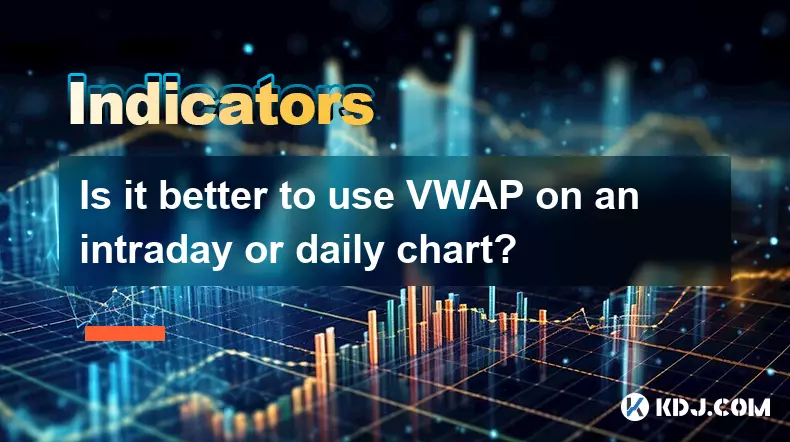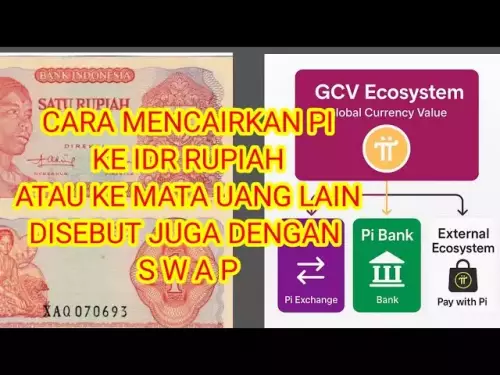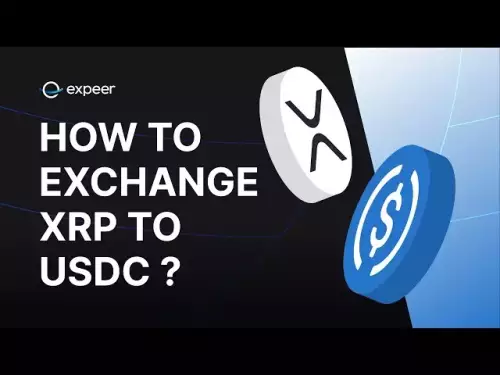-
 bitcoin
bitcoin $112715.707551 USD
-1.71% -
 ethereum
ethereum $4101.475385 USD
-3.01% -
 tether
tether $1.000644 USD
-0.02% -
 bnb
bnb $1207.619465 USD
-6.77% -
 xrp
xrp $2.501451 USD
-3.98% -
 solana
solana $202.947124 USD
-3.32% -
 usd-coin
usd-coin $1.000295 USD
0.04% -
 dogecoin
dogecoin $0.203884 USD
-4.47% -
 tron
tron $0.317154 USD
-1.72% -
 cardano
cardano $0.695009 USD
-4.43% -
 hyperliquid
hyperliquid $38.853961 USD
-8.23% -
 chainlink
chainlink $18.988674 USD
-4.64% -
 ethena-usde
ethena-usde $1.000233 USD
-0.03% -
 stellar
stellar $0.337050 USD
-3.63% -
 bitcoin-cash
bitcoin-cash $536.861728 USD
-1.28%
What does the J line in the KDJ indicator signify?
The J line in the KDJ indicator highlights momentum extremes, with values above 100 signaling overbought conditions and below 0 indicating oversold levels, useful for spotting reversals in volatile crypto markets.
Oct 12, 2025 at 01:38 pm

Understanding the J Line in the KDJ Indicator
1. The J line in the KDJ indicator represents the divergence and convergence of the %K and %D lines, providing insights into potential overbought or oversold market conditions. It is derived from a formula that emphasizes momentum by combining three times the difference between %K and %D, subtracted from twice the %D value.
2. When the J line rises above 100, it typically signals an overbought condition in the cryptocurrency market, suggesting that prices may correct downward soon. Conversely, when the J line drops below 0, it indicates an oversold scenario, which could precede a price rebound.
3. Traders often use crossovers between the J line and the %D line as entry or exit signals. For instance, when the J line crosses above the %D line from below, especially in oversold territory, it may signal a bullish reversal.
4. The volatility of the J line makes it highly sensitive to price movements. This responsiveness can generate early trading signals but also increases the risk of false alarms during sideways or choppy market phases common in the crypto space.
5. In fast-moving digital asset markets, the J line’s ability to highlight rapid shifts in momentum helps traders identify short-term opportunities. Its effectiveness is enhanced when combined with volume indicators or support/resistance levels to filter out noise.
Significance of Extreme J Line Values
1. A J line value exceeding 100 suggests excessive buying pressure, often unsustainable in volatile markets like Bitcoin or Ethereum. Such readings warn traders of possible pullbacks, prompting caution against opening new long positions.
2. Readings below 0 reflect extreme selling pressure, frequently observed during panic sell-offs in altcoin markets. These levels may indicate capitulation, offering contrarian traders a chance to enter at discounted prices.
3. Extended periods above 100 or below 0 are rare but significant. They often coincide with parabolic moves or sharp corrections, particularly during major news events or macroeconomic shifts affecting investor sentiment.
4. Monitoring how quickly the J line returns to the 0–100 range helps assess the strength of a trend. A rapid reversion suggests weak momentum, while a prolonged stay beyond thresholds may confirm strong directional bias.
5. In low-liquidity altcoins, extreme J values can be misleading due to thin order books. Therefore, confirming such signals with on-chain data or exchange flow metrics improves reliability.
Practical Applications in Crypto Trading
1. Day traders utilize the J line to time entries and exits within tight ranges, especially on 15-minute or hourly charts where momentum shifts occur rapidly across decentralized exchanges.
2. Divergence between the J line and price action serves as a powerful predictive tool. For example, if the price hits a new high but the J line forms a lower peak, it hints at weakening bullish momentum.
3. Scalpers combine the J line with moving averages to avoid whipsaws. Entering a trade only when the J line crosses %D and aligns with the direction of a key EMA reduces false signals.
4. During consolidation phases, the J line oscillates around the midpoint, offering little actionable insight. Traders wait for breakout confirmation before acting on J line movements.
5. Backtesting strategies involving the J line on historical crypto pairs reveals its effectiveness varies by asset class—more reliable in large-cap coins than in memecoins with erratic price behavior.
Frequently Asked Questions
What causes the J line to spike sharply in crypto charts?Sharp spikes in the J line are usually triggered by sudden surges in buying or selling volume, often linked to breaking news, whale transactions, or leveraged liquidations on futures markets.
Can the J line be used alone for trading decisions?Relying solely on the J line is risky due to its sensitivity. It performs best when integrated with other tools like RSI, MACD, or on-chain analytics to validate signals in unpredictable crypto environments.
How does the J line differ from the RSI in detecting overbought conditions?While both measure momentum, the J line incorporates stochastic principles based on price closing relative to recent ranges, whereas RSI calculates average gains versus losses over a set period, making their interpretations contextually distinct.
Is the J line effective in bear markets?Yes, though interpretation shifts. In downtrends, overbought signals (J > 100) may present shorting opportunities, while oversold readings (J
Disclaimer:info@kdj.com
The information provided is not trading advice. kdj.com does not assume any responsibility for any investments made based on the information provided in this article. Cryptocurrencies are highly volatile and it is highly recommended that you invest with caution after thorough research!
If you believe that the content used on this website infringes your copyright, please contact us immediately (info@kdj.com) and we will delete it promptly.
- Tokenization Takes Center Stage: SEC-Registered Stock Tokens Reshape Finance
- 2025-10-15 22:25:13
- Bitcoin Seized, Transferred: A New York Minute on Crypto's Wild Ride
- 2025-10-15 22:25:13
- Milk & Mocha's $HUGS: Can This Crypto Presale Deliver a 100x Portfolio?
- 2025-10-15 22:30:01
- Memecoins Grow Up: $HUGS Presale Offers Real Utility
- 2025-10-15 22:45:13
- HUGS Launch, Crypto Bull Run, and a Perfect Storm Brewing?
- 2025-10-15 22:45:13
- Zero Knowledge Proof, Whitelists, and the Future of Blockchain Privacy
- 2025-10-15 22:30:01
Related knowledge

What's the main difference between VWAP and TWAP?
Oct 12,2025 at 11:54am
Understanding VWAP and Its Role in Crypto Trading1. Volume Weighted Average Price (VWAP) is a trading benchmark that calculates the average price of a...

How do you identify exhaustion moves using VWAP and its bands?
Oct 12,2025 at 08:00am
Understanding the Role of Decentralized Exchanges in Crypto Trading1. Decentralized exchanges (DEXs) operate without a central authority, allowing use...

Is it better to use VWAP on an intraday or daily chart?
Oct 15,2025 at 02:01am
Intraday Trading and the Role of VWAP1. Intraday traders frequently rely on VWAP (Volume Weighted Average Price) as a dynamic benchmark for assessing ...

How do you use VWAP to scale in and out of positions?
Oct 14,2025 at 02:19am
Understanding VWAP as a Dynamic Benchmark1. The Volume Weighted Average Price (VWAP) is not just an indicator—it functions as a dynamic benchmark that...

What are the main advantages of using VWAP over EMA?
Oct 11,2025 at 02:18am
Main Advantages of Using VWAP Over EMA1. Volume-Weighted Average Price (VWAP) incorporates trading volume into its calculation, offering a more accura...

How do you use VWAP on different chart types like Heikin Ashi?
Oct 11,2025 at 05:01pm
Understanding VWAP in the Context of Heikin Ashi Charts1. The Volume Weighted Average Price (VWAP) is a powerful analytical tool commonly used by trad...

What's the main difference between VWAP and TWAP?
Oct 12,2025 at 11:54am
Understanding VWAP and Its Role in Crypto Trading1. Volume Weighted Average Price (VWAP) is a trading benchmark that calculates the average price of a...

How do you identify exhaustion moves using VWAP and its bands?
Oct 12,2025 at 08:00am
Understanding the Role of Decentralized Exchanges in Crypto Trading1. Decentralized exchanges (DEXs) operate without a central authority, allowing use...

Is it better to use VWAP on an intraday or daily chart?
Oct 15,2025 at 02:01am
Intraday Trading and the Role of VWAP1. Intraday traders frequently rely on VWAP (Volume Weighted Average Price) as a dynamic benchmark for assessing ...

How do you use VWAP to scale in and out of positions?
Oct 14,2025 at 02:19am
Understanding VWAP as a Dynamic Benchmark1. The Volume Weighted Average Price (VWAP) is not just an indicator—it functions as a dynamic benchmark that...

What are the main advantages of using VWAP over EMA?
Oct 11,2025 at 02:18am
Main Advantages of Using VWAP Over EMA1. Volume-Weighted Average Price (VWAP) incorporates trading volume into its calculation, offering a more accura...

How do you use VWAP on different chart types like Heikin Ashi?
Oct 11,2025 at 05:01pm
Understanding VWAP in the Context of Heikin Ashi Charts1. The Volume Weighted Average Price (VWAP) is a powerful analytical tool commonly used by trad...
See all articles










































































